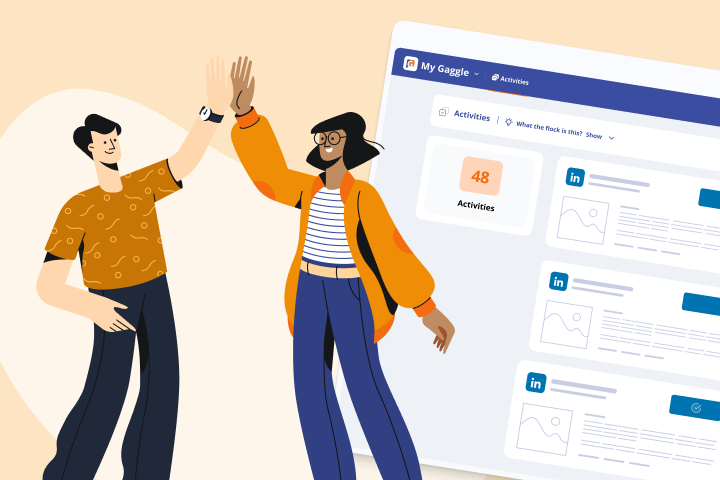How To Increase Brand Awareness: A Simple Strategy That Works
Most marketers claim that the key to increasing brand awareness is consistently posting high-quality content on as many channels as possible. However, many brands already do this and find it produces subpar results.
While consistently posting high-quality content is important, it's just table stakes.
If you want to produce atypical results and exponentially increase brand awareness, you can't just follow generic guidelines.
The good news is that we've experimented with various brand awareness strategies and discovered a handful of highly effective tactics that most brands aren't yet leveraging to build brand awareness.
In this post, we'll define brand awareness and give you a step-by-step process to build a solid foundation, and then introduce you to some of our favorite sustainable strategies for increasing brand awareness.
What Is Brand Awareness?
Brand awareness is a marketing term that refers to the percentage of the population that knows of a company.
For example, Nike has excellent brand awareness because most people have heard of the company.
There are also different levels of brand awareness.
Some people may have simply heard of a company's name, whereas others may deeply understand what it sells, its key values, and how it's different from its competitors.
For example, one customer may know that Nike stands for the underdogs and how its apparel differs from competitors like Adidas. In contrast, another customer may have just heard of the name "Nike" and have a vague idea that it sells athletic apparel.
Ideally, you want as many people within your target audience as possible to deeply understand your brand identity and be raving fans.
Most marketers use social media marketing, strategic search engine optimization (SEO), content marketing, podcasts, influencer and brand partnerships, paid ads, webinars, and other marketing channels to increase total brand awareness and deepen audience loyalty.
What Are the Benefits of Brand Awareness?
Measuring the ROI of brand awareness is notoriously difficult. Unfortunately, executives usually want to see more measurable results. So, if you're struggling to get buy-in from leadership, here are a few other measurable benefits of brand awareness:
- Grows Your Total Customer Base: If potential customers have heard of your brand before, they're more likely to purchase from you over an unknown brand.
- Decreases Customer Acquisition/Marketing Costs: Most of the sales process is dedicated to building trust with a prospect. Therefore, you can greatly reduce the sales cycle timeframe (and, therefore, remarketing costs and the sales team's time) if prospects are already familiar with your brand.
- Increases Word-of-Mouth Marketing/Referrals: If more people know about your brand or have heard excellent things about it, they're more likely to tell their friends and family, which exponentially increases reach.
- Organically Attracts Top Talent: The best talent is attracted to companies with great reputations. By investing in brand awareness, you'll reduce talent acquisition costs and even get great talent at a discount.
- Increases Company Value and Longevity: A company with strong brand loyalty is much more stable, so you'll increase the value of your company and protect it against recessions by investing in brand awareness.
Now that you know the benefits of brand awareness, let's discuss a tactical strategy to increase brand awareness.
How To Increase Brand Awareness: A Proven Strategy
The problem with most brand awareness strategies is that they're a collection of random marketing tactics that might drive more impressions but don't work together to produce compounding results.
For example, one tactic might be running a random social media contest while another is running an influencer marketing campaign.
If you keep switching from one shiny new tactic to another, you probably won't produce great results because:
-
You never have an opportunity to thoroughly test and learn how to maximize that tactic.
-
It's difficult to build an audience if your content is constantly changing. People tend to gravitate toward a specific channel and content style, so consistency is important.
-
Tactics tend to have limited lifespans before every marketer learns about it and ruins it.
Below we'll walk you through the process of building a foundation to predictably increase brand awareness.
Step 1: Identify the Best Marketing Channels for Your Brand
In a perfect world, you'd advertise on every (relevant to your target audience) marketing channel and post to each social media platform multiple times daily. However, this strategy is unrealistic for most brands due to resource constraints, and spreading your resources too thin usually means none will perform well.
So, select just a handful of relevant marketing channels and then post on them consistently.
To determine which channels to invest in, look at the marketing channels and social media platforms your competitors are most active on. You can use a free tool like Similar Web to enter any of your competitors' URLs and view their traffic sources by marketing channel.
For example, I can see that organic search is the marketing channel that drives the most traffic for Ahrefs.
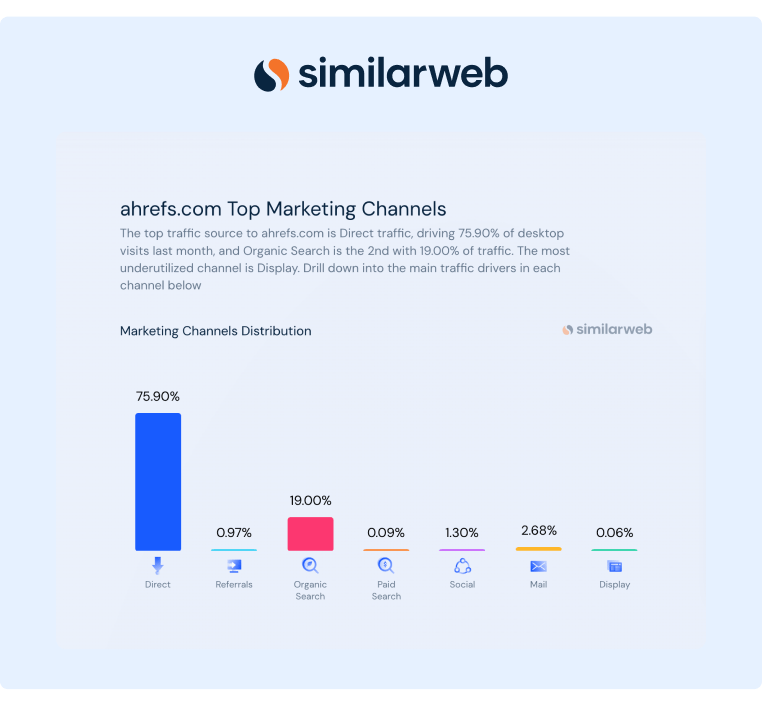
From there, I can drill down and uncover their SEO strategy. For example, I'd identify their top performing keywords and their blog post publishing frequency.
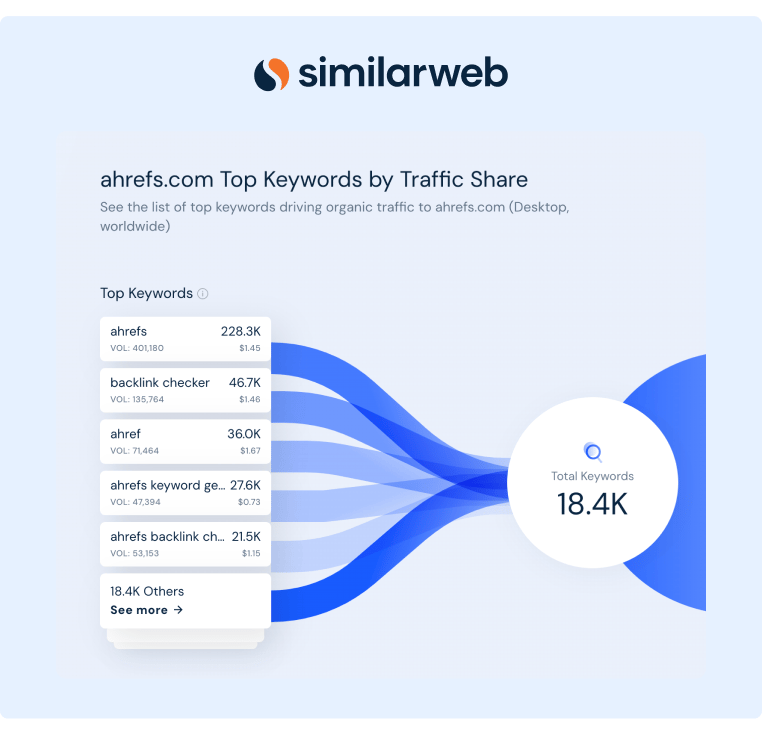
I'd also sign up for their email list as email is their second highest performing marketing channel. Again, I'd look at both their send frequency and the type of content they send in their email.
Similar Web also offers a breakdown of Ahrefs’ top social media channels. For example, YouTube is their top performing social network, and Facebook is their second highest performing post.
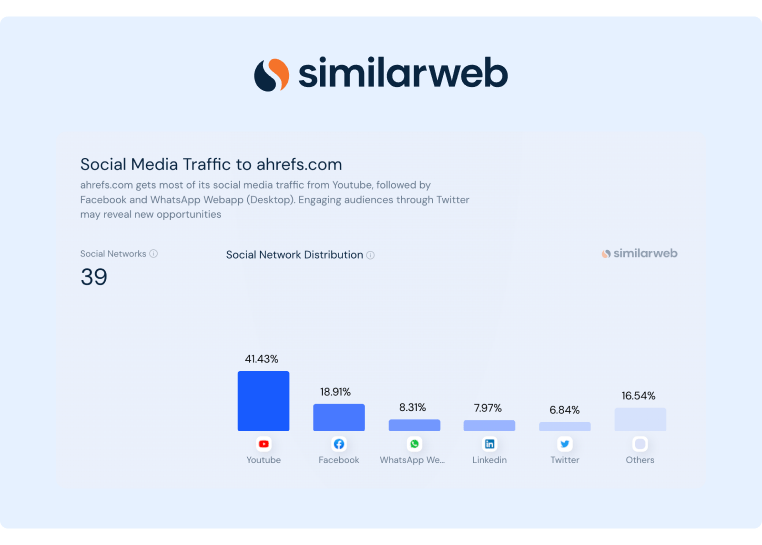
Do this analysis for about five of your competitors, then invest in two to three of the most successful marketing channels.
It's also worth noting that selecting competitors about the same size as your company is a good idea. If you select competitors that are too large, you probably won't be able to compete with them.
For example, Ahrefs has very strong authority and can rank for keywords that most small startups would not be able to rank for.
Step 2: Create a Consistent Publishing Workflow
Once you've selected a handful of marketing channels, the key is to create a repeatable format and publish consistently.
If your format is constantly changing, you'll likely be less successful for two reasons:
-
Audiences Gravitate Towards Specific Formats: If someone subscribes to your marketing channel, it's probably because the content ideas and style resonates with them. So, changing the format to a new, unproven style is risky as your subscribers might not like the new format. Instead, double down on giving subscribers more of the content they subscribed to receive.
-
You Won't Be Able To Establish Strong Standard Operating Procedures (SOPs): If your format constantly changes, scaling will be difficult because you can't give everyone on your publishing team a specific job. As a result, you won't be able to produce as much content, and the team will never be able to become true experts in any content format.
To help you decide on a specific content format, analyze your competitors' content angle and think about why it resonates with the audience.
Your competitors' audience is also your ideal audience, so even though you don't want to copy your competitors' content, you can use their ideas to inspire your content strategy.
For example, if I ran a competing company to Semrush and Ahrefs and decided to invest in YouTube content to boost brand awareness, I would look at both of their strategies and take notes on what makes them great:
- Ahrefs: They provide data-backed, step-by-step tutorials with a single person from their team.
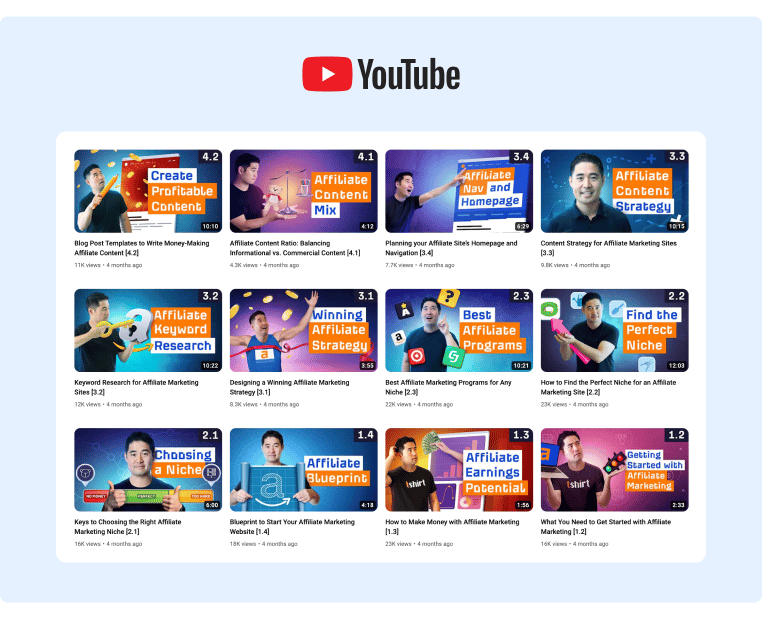
- Semrush: They consistently showcase influencers in the videos to provide unique experiences, but the teaching formats vary.
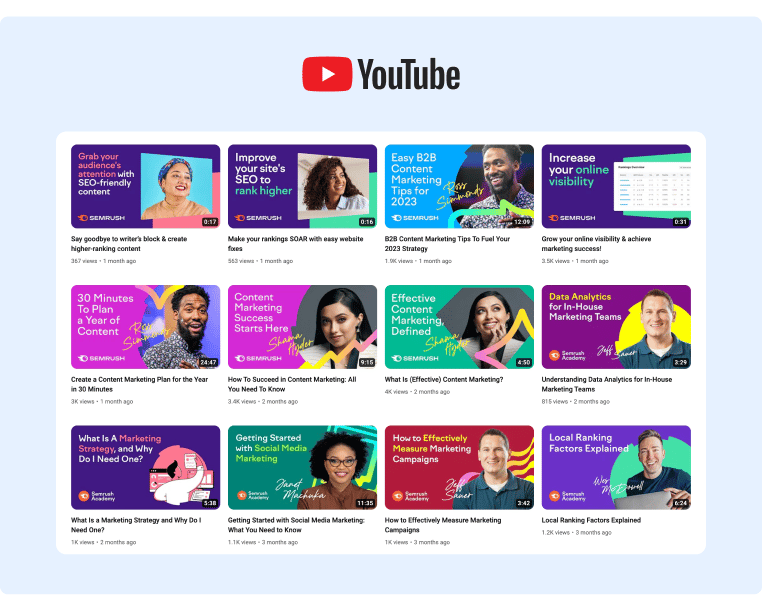
After analyzing these two competitors, I might create a YouTube strategy that uses influencers, but all of them follow the exact same data-driven formula.
Once you've decided on a unique format for each marketing channel, create SOPs (standard operating procedures) and give each person on your team a specific task. Creating a process to crank out content consistently ensures your publishing schedule stays on track and allows you to increase publishing frequency over time.
You can create your SOPs in a tool like Trello. Here's an example of what the process might look like:
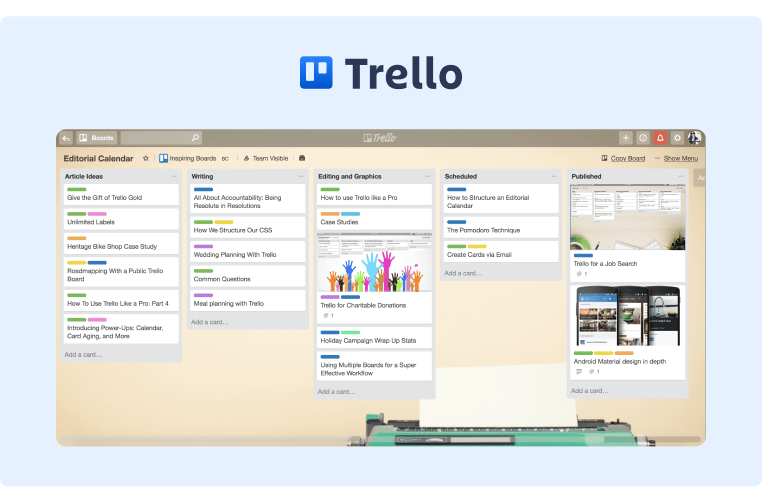
Source: Trello
Step 3: Measure Results and Adjust
Once you’ve created a consistent strategy, measure brand awareness metrics like traffic, brand sentiment, branded hashtags, new backlinks, and brand mentions.
You can use a social listening tool like Mention or Brand24 to do this for you.
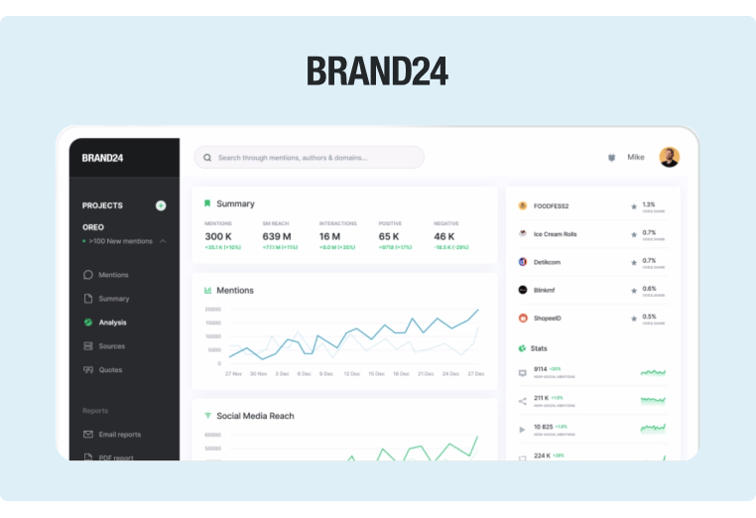
Source: Brand24
Building a brand takes time, but these initial metrics can help you understand if your marketing efforts are headed in the right direction. The main things to look for in your analytics are:
-
Which channels were most successful?
-
Which campaigns within those channels were most successful?
-
Are there any channels that performed significantly worse than others?
Now, all you need to do is double down on the most successful marketing channels and campaigns.
Note: Most content marketing channels will produce a significantly lower initial ROI than a paid channel, but they tend to have a higher ROI in the long run. So, be sure to consider that as you assess each marketing channel's performance.
Step 4: Create a Distribution Engine
After a few months, you'll have ironed out your workflow process and have a strong brand recognition strategy.
The next step is to create a distribution engine to maximize your existing marketing efforts.
At the beginning of this post, I mentioned that most brand marketing strategies are just a compilation of random marketing tactics. As a result, none of them really gain traction, and you end up with a poor long-term ROI.
Now that you have a consistent foundational strategy for two to three marketing channels, you can layer various distribution tactics on top of those proven strategies to exponentially increase your reach.
We'll talk about two main distribution engines: content repurposing and content promotion.
Content Repurposing
Content repurposing is taking an existing piece of content and repackaging and publishing it on different platforms. While I don't recommend trying to post unique content on more than two or three channels as you're building your brand awareness strategy, you can post the same content ideas across multiple channels.
This works because you can hire someone for relatively cheap (like a virtual assistant) or even use AI to take your existing content (like a video) and publish the ideas in a blog post or across social media platforms, like LinkedIn, Twitter, Instagram, and TikTok.
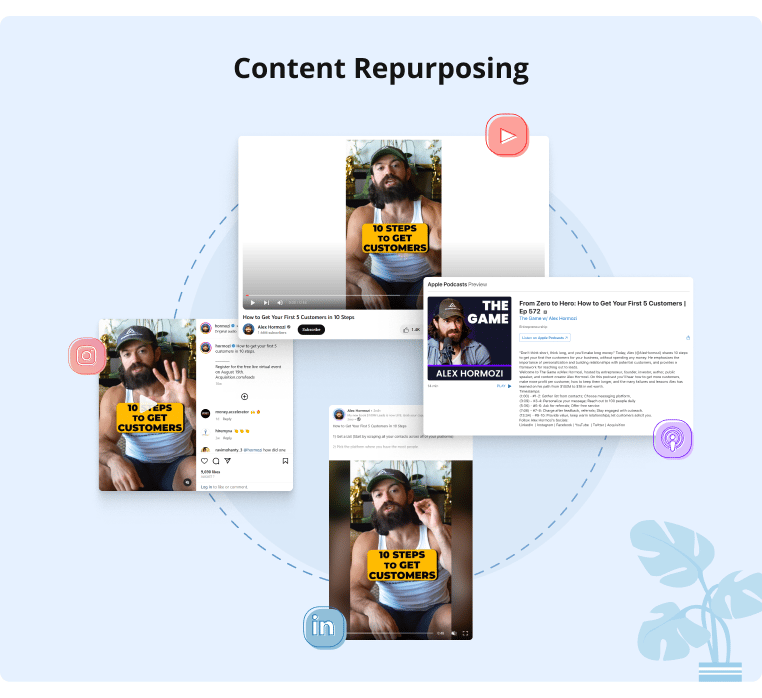
This works because it requires little additional investment and can exponentially increase your content's reach.
Content Promotion
While content repurposing leverages different channels to reach new audiences, content promotion is designed to drive more impressions and traffic to your core marketing channels/campaigns.
For example, if one of your original brand awareness channels is LinkedIn content, promotion strategies would be ads to that LinkedIn content or employee advocacy (which we'll discuss in more detail below).
In this case, we're not taking the LinkedIn post and using it to create a new piece of content (like a Twitter post). But rather, we're driving more engagement to that existing LinkedIn post.
Here’s a great example where a creator tested various organic posts and then ran ads to the highest performing post:
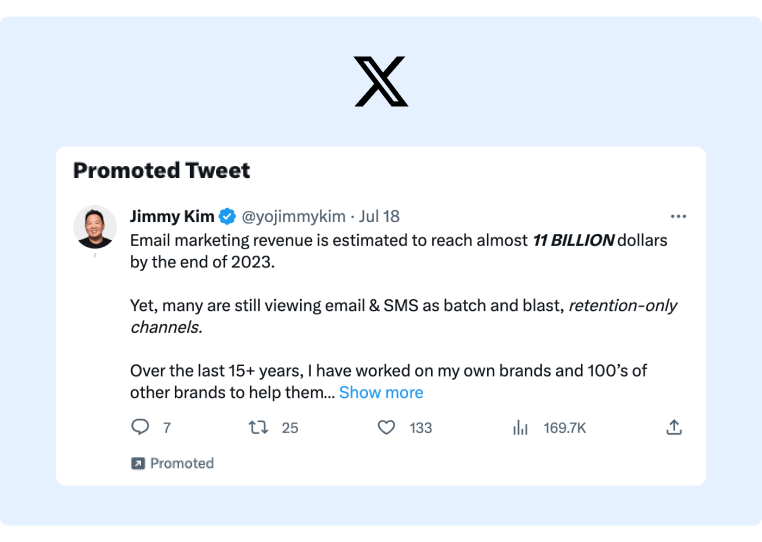
Source: Jimmy Kim
Evergreen Brand Awareness Tactics To Add On Top of Your Strategy
Each year, you’ll see hundreds of new tactics to try. Below we’ll cover evergreen strategies that work today and will continue to work in the future.
Tactic #1: Employee Advocacy
Many of your employees likely have connections in their network that could benefit from your products or services. Simply asking employees to share company messages on social media is a great way to increase quality brand awareness.
It’s also a very cost effective method to increase brand visibility since, unlike influencer marketing, you don’t have to pay employees for each engagement.
Here’s a great example of employee advocacy in action. This employee’s network will now see the brand’s content:
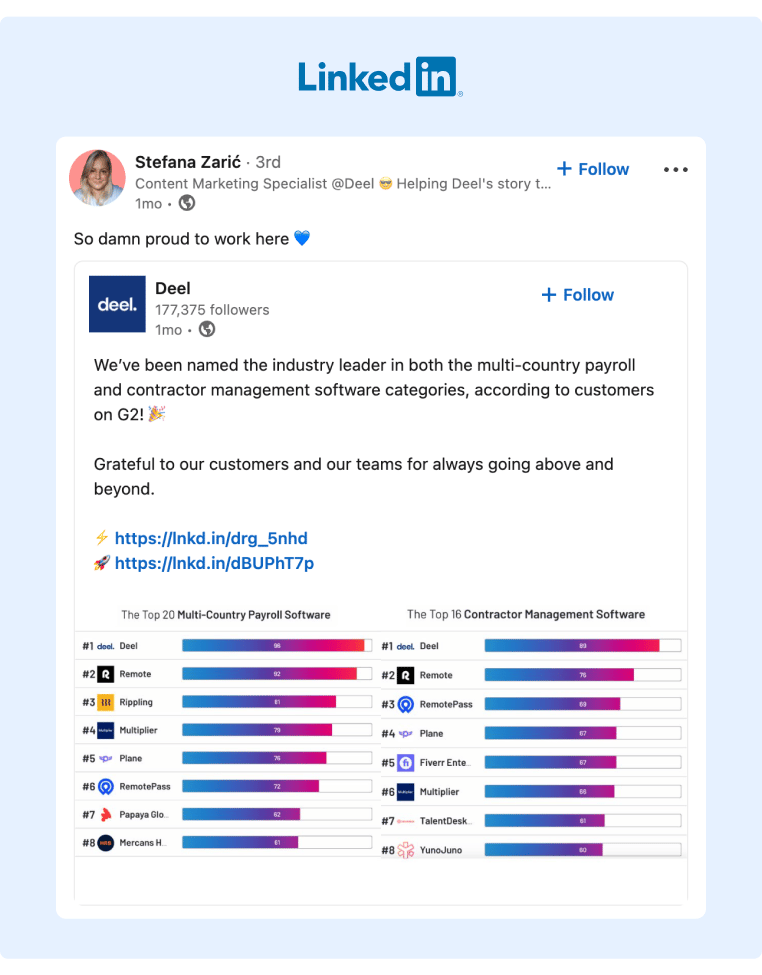
Source: Stefana Zarić
The only challenge with employee advocacy is keeping employees engaged for an extended period of time.
Most employees are happy to promote the brand but often quit engaging because they don't have time to participate or fear they'll say something off-brand.
To solve these problems and help you build a sustainable employee advocacy program, you can use an employee advocacy tool like GaggleAMP to assign specific engagement activities to employees at scale.
Here's an overview of how it works.
First, you'll select the type of engagement activity (share, like, comment, etc.) for the platform you want them to engage on (LinkedIn, Twitter, Facebook, etc.).
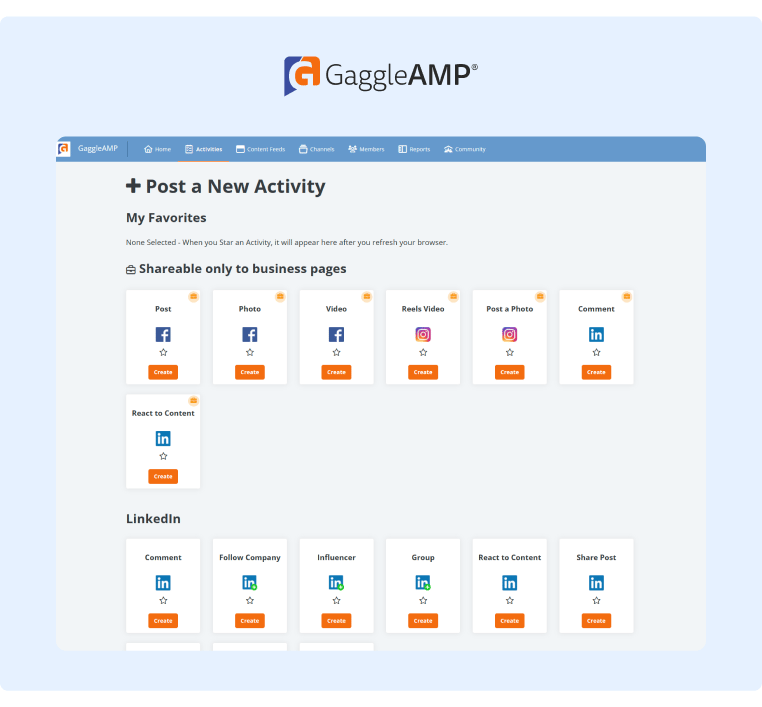
Then, fill out the engagement activity with a link to the social media post you want them to engage with and assign a due date. You can also use the AI-powered writing tool to pre-write text for the employee so that they only have to approve the content before publishing.
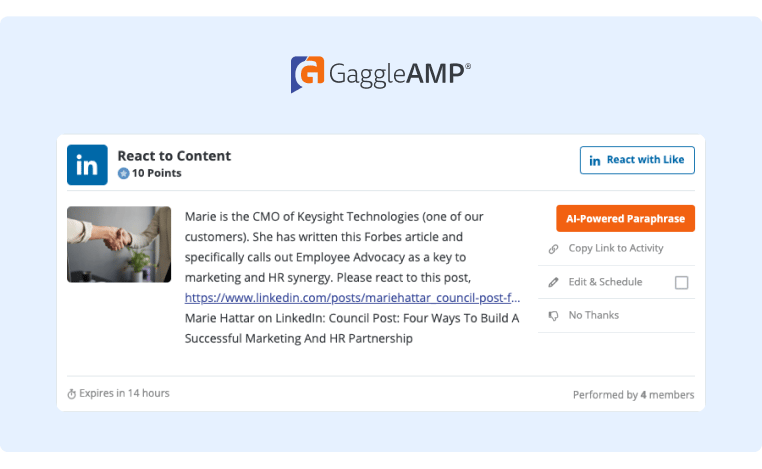
Once the engagement activity is complete, you can assign it to a specific employee or a group of employees, like the marketing or executive team.
The recipients then receive a notification that they have an engagement activity waiting, and they can log into their personal Gaggle account to view the assigned activities. They can also complete the activities inside the dashboard and schedule them to publish at a future time and date.
This makes it super easy for employees to engage, and as a result, your employee engagement program will be sustainable.
Tactic #2: Influencer Collaborations
Influencer marketing campaigns are highly effective as you're essentially paying a one time fee to get in front of your ideal target audience through a person they already trust (the influencer).
Plenty of platforms, like Upfluence, allow you to find and hire influencers, or you can look for your customer list and reach out to influencers already using your product/service.
Alternatively, you can often get free promotion from micro-influencers by including them in your content. For example, if you do a video, you can interview them on the video and then ask them to promote it to their audience.
Here's a great example of this in action:
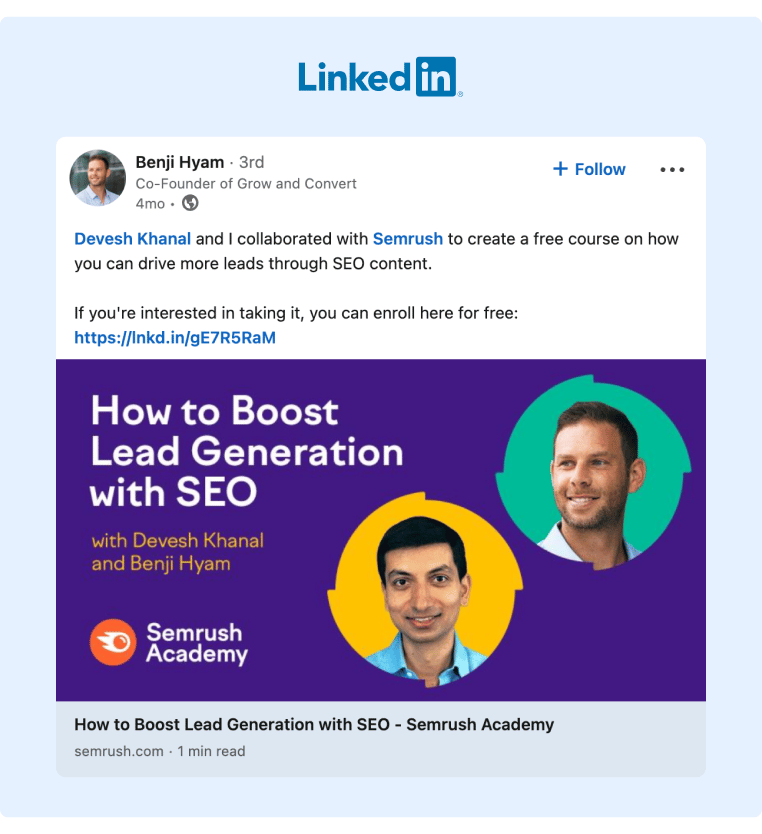
Source: Benji Hyam
If you can't get anyone to agree to collaborate with you, instead promote a methodology that you learned from an influencer. The influencer may even share it with their audience.
For example, this person repeated a quote from an influencer, and the influencer engaged with their post:
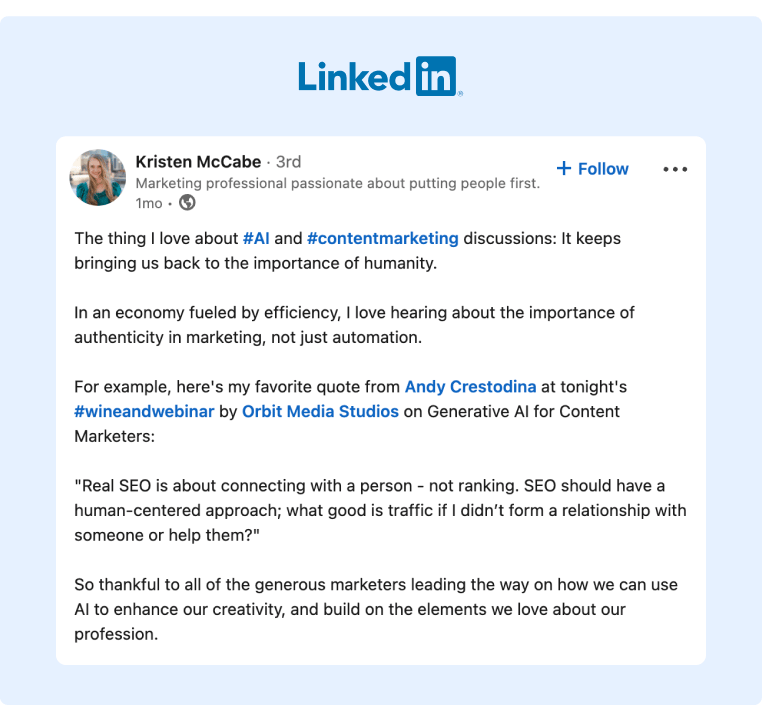
Source: Kristen McCabe
As a result, the influencer engaged with the content, which helped it generate significantly more reach.
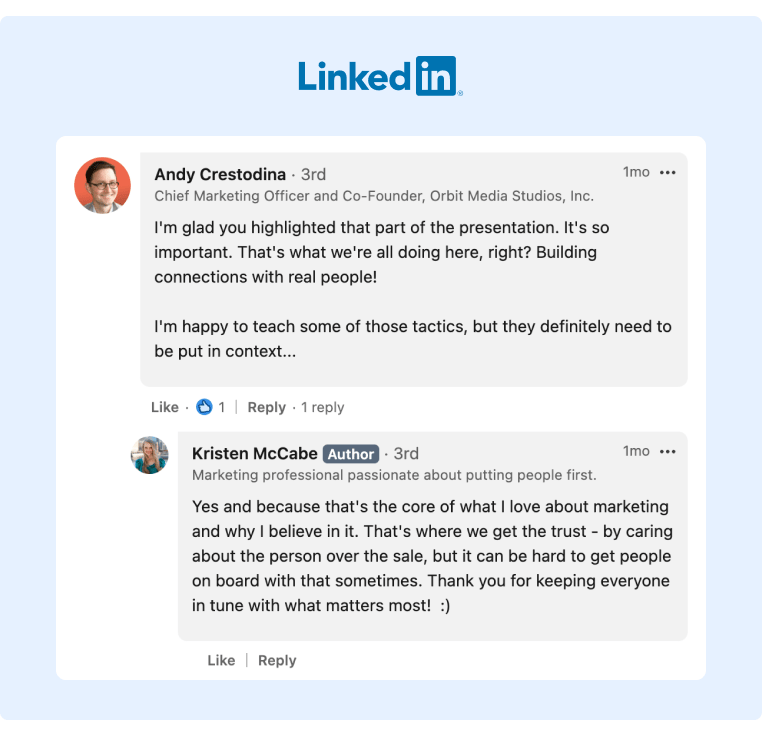
Source: Kristen McCabe
The key to making this strategy work is to first analyze which influencers tend to share content they're tagged in and then share one of their ideas.
If the influencer typically doesn't engage with people who tag that person or mention them in their content, they probably won't engage with your content either.
Tactic #3: Tag Referenced Resources
This strategy is similar to the one we mentioned above, but instead of quoting or referencing a specific person or idea, you can reference a resource or tool you used.
Here’s a great example of this in action:
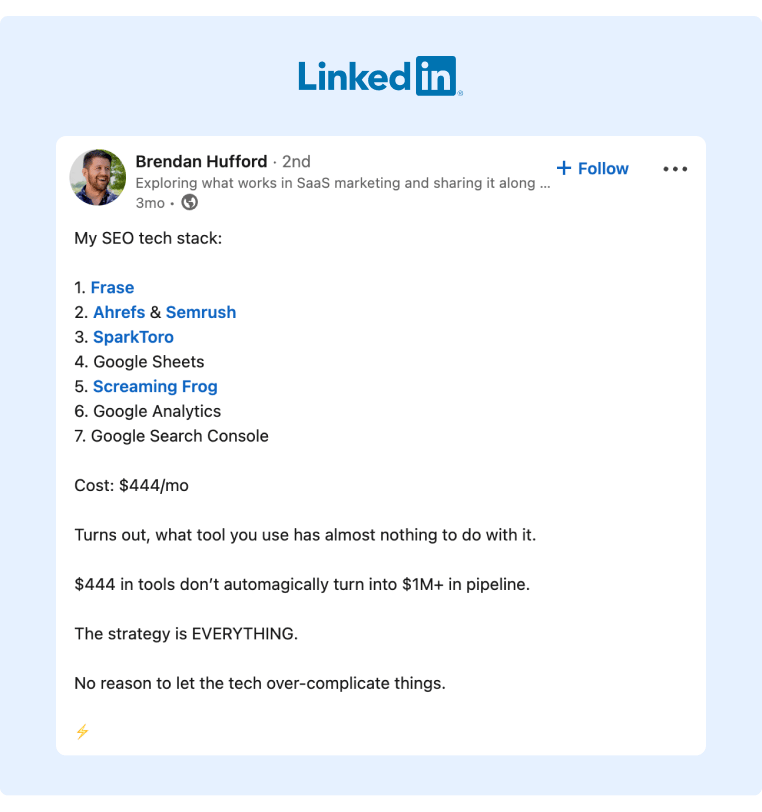
Source: Brendan Hufford
Many of these brands will reshare the post, and if nothing else, it usually drives excellent engagement from others within the community.
Tactic #4: Content Promotion Swaps
Another great way to increase brand awareness is to team up with another parallel brand with a similar audience (make sure their offer is non-competitive) and do a content promotion swap.
For example, if you sell webinar software, you could team up with a brand that sells landing page software. You could promote a blog post they've produced that covers how to build a landing page for a webinar. In return, you can ask them to promote one of your blog posts on building a webinar to go with their landing page.
The key to making this mutually beneficial is ensuring the other brand has a similar audience.
To identify these brands, you can ask your customers what other products they use in conjunction with your product.
Tactic #5: Engage With the Community
One of the best brand building techniques is simply engaging with your audience. For example, if they comment on your post, respond to their comment with a thoughtful remark or ideally another question to keep the engagement going.
Here's a great example of a micro-influencer that actively responds to every comment:
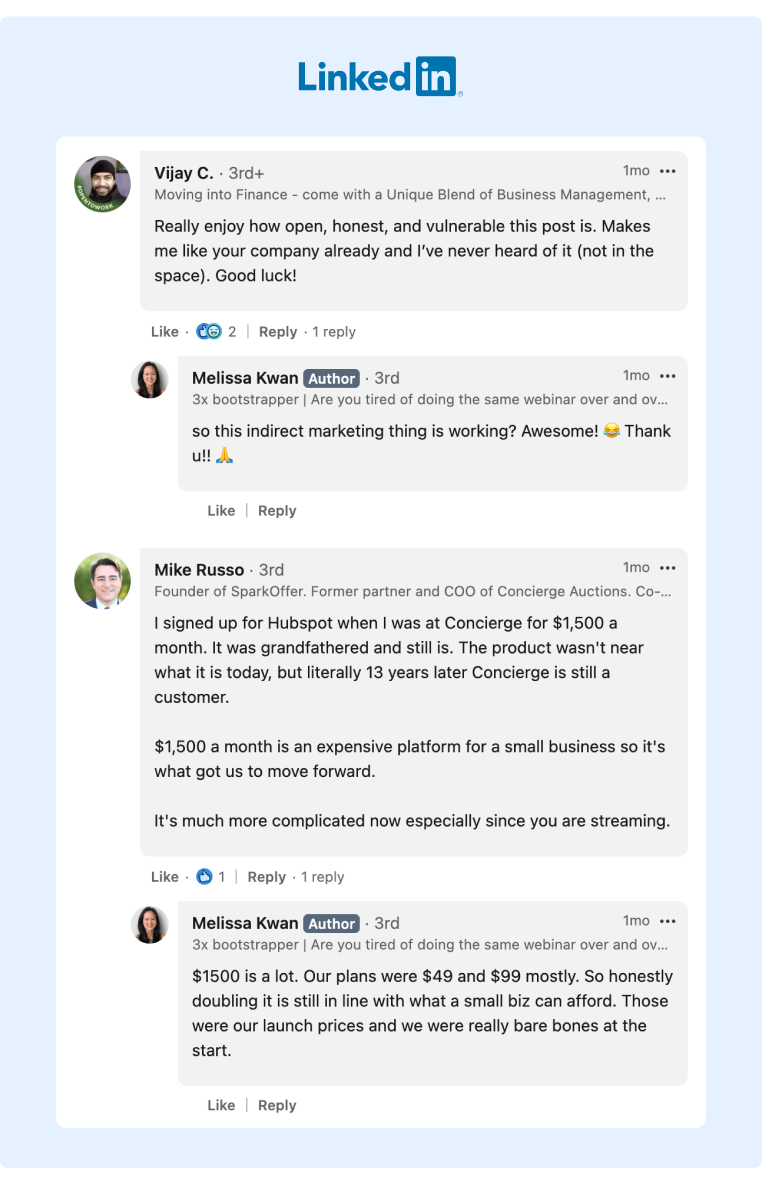
Source: Melissa Kwan
You can also find Slack, Facebook, and LinkedIn groups and actively answer questions within the community. This strategy is a great way to build goodwill in the community, and people are more likely to support your content.
Tactic #6: Run Paid Ads
Finally, a tried and tested method to generate more traffic and impressions to any piece of content is to simply run paid ads to that content.
To run paid ads, first look at which types of content generate the most organic reach, and then run ads to those pieces of content.
Start Your Next Brand Awareness Campaign Today
The reason many brands struggle to build awareness is because they incorporate various random acts of marketing without a definitive strategy.
Instead, use the brand awareness strategy in this post to create a solid foundation and then layer on the various evergreen brand awareness strategies to sustainably increase brand awareness.
Our favorite brand awareness strategy is leveraging employees to promote content for the brand. If you want to implement a sustainable employee advocacy program, consider using a platform like GaggleAMP to automate employee advocacy management. You can learn more by trying the platform for free or scheduling a demo.



